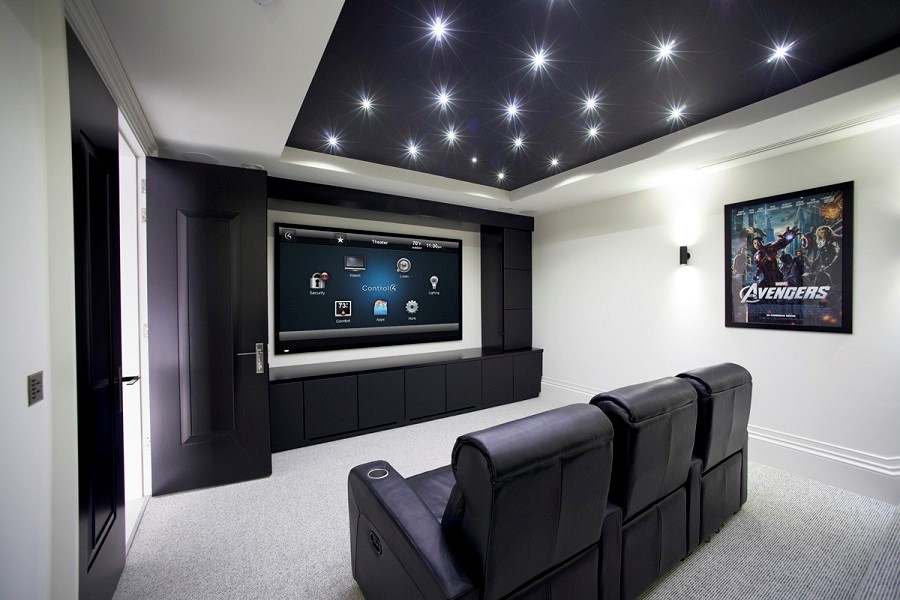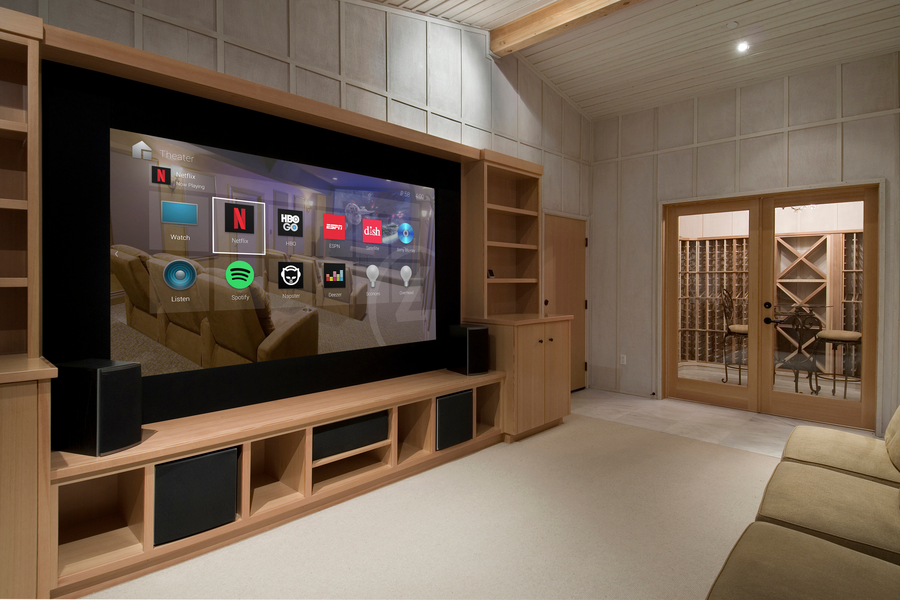Home theater systems are becoming increasingly popular among homeowners who are seeking to recreate the cinema experience in their homes. A well-designed and installed home theater system can offer a level of audio and visual immersion that simply cannot be matched by traditional TV setups. However, setting up a home theater system can be daunting for those who are not technically savvy. Transform your living room into a theater with our expert home theater installation services. This article will explore the steps involved in setting up a home theater system, including choosing the right equipment, selecting the perfect room, and optimizing the audio and visual experience.
Choosing the Right Equipment:
The first step in setting up a home theater system is choosing the right equipment. A basic home theater system typically consists of a television or projector, speakers, an AV receiver, and various cables and wires. When selecting these components, it is important to consider your budget, space constraints, and personal preferences.
Television vs. Projector
The centerpiece of any home theater system is the display, which can either be a television or a projector. Televisions are popular due to their affordability and ease of use, while projectors offer a larger screen size and a more cinematic experience. The room’s size and existing lighting conditions are two factors to think about while deciding between the two. While projectors require near-total darkness to function properly, televisions may be viewed in a wider variety of settings.
Speakers:
The next component to consider is the speakers. A typical home theater system includes a center channel speaker, front left and right speakers, surround speakers, and a subwoofer. When selecting speakers, it is important to consider their placement in the room and size. Smaller rooms may require smaller speakers, while larger rooms may require larger, more powerful speakers. It is also important to consider the sound quality of the speakers, as this will significantly impact the overall audio experience.
AV Receiver:
The AV receiver is the home theater system’s hub, connecting all components and providing power and processing. When selecting an AV receiver, it is important to consider its compatibility with the other components in the system, as well as its power output and processing capabilities.
Selecting the Perfect Room:
Once you have selected your equipment, the next step is to select the perfect room for your home theater system. Ideally, you want a large enough room to accommodate your equipment and seating while also being isolated from external noise and distractions.
Size and Shape of the Room:
The size and shape of the room will have a significant impact on the audio and visual experience. In general, larger rooms will require more powerful speakers and a larger screen size, while smaller rooms may benefit from smaller speakers and a smaller screen. The room’s shape can also impact the acoustics, with square rooms generally producing more pronounced echo and reverb than rectangular rooms.

Ambient Light and Noise:
The amount of ambient light and noise in the room will also significantly impact the home theater experience. Ideally, you want a room that can be easily darkened to eliminate any external light sources. Additionally, you want to minimize any external noise sources, such as traffic or noisy neighbors.
Optimizing the Audio and Visual Experience:
Once you have selected the perfect room and installed your equipment, the next step is to optimize the audio and visual experience. This involves fine-tuning the equipment settings and room acoustics to create the perfect home theater experience.
Calibrating the Audio:
Calibrating the audio involves adjusting the speaker settings and position to create an immersive audio experience. This may involve adjusting the crossover frequency, speaker levels, and subwoofer placement to achieve a balanced and accurate sound.
Calibrating the Video:
Calibrating the video involves adjusting the display settings to ensure optimal picture quality. This may involve adjusting the brightness, contrast, color, and sharpness settings to achieve a balanced and accurate picture. It is also important to consider the aspect ratio and resolution of the display, as this will impact the visual experience.
Room Acoustics:
Room acoustics play a significant role in the audio experience, and it is important to optimize the room to minimize any echoes, reverb, or standing waves. This may involve adding acoustic panels or diffusers to the walls, ceiling, and floor to absorb or diffuse sound waves. It may also involve adjusting the placement of furniture and décor to minimize any reflections or obstructions.
Seating Position:
The seating position can also impact the audio and visual experience. Ideally, you want the seating position to be centered between the front and surround speakers and positioned at a distance from the display that is proportional to the screen size. This will ensure a balanced and immersive audio and visual experience.
Choosing the Right Speakers for Your Home Theater System:
The speakers you choose for your home theater system will significantly impact the overall audio experience. When selecting speakers, it is important to consider factors such as frequency response, power handling, and sensitivity. Additionally, you will want to choose speakers that are well-suited for the size of the room in which they will be used. For example, large rooms may require larger speakers or more speakers to provide adequate coverage.
Audio Calibration and Room Correction:
Once you have selected the speakers for your home theater system, it is important to calibrate and optimize the audio settings to ensure optimal sound quality. This may involve adjusting the speaker placement, setting the correct levels for each speaker, and using room correction software to compensate for any acoustical anomalies in the room. Room correction software can analyze the room’s acoustical properties and adjust each speaker’s audio output to compensate for any issues, resulting in a more accurate and balanced sound.
Enhancing Your Viewing Experience with Additional Equipment:
There are a variety of add-ons that can improve the quality of your home theater experience beyond the basics. A media streamer, for instance, can provide you access to numerous streaming services, letting you watch your preferred films, television series, and more without the need for any kind of physical media. A soundbar can improve upon the TV’s built-in speakers, and a game console can let you play your favorite titles on a larger screen.
Maintenance and Upkeep of Your Home Theater System:
Maintaining your home entertainment system after installation is essential to extending its life and ensuring its continued high performance. This may involve regularly cleaning and dusting the components, replacing worn or damaged cables or connectors, and keeping the system free of obstructions or clutter. Additionally, it is important to stay up-to-date with any firmware updates or software upgrades for the various components of the system, as these updates can often improve performance and add new features.
Conclusion:
In conclusion, while installing a home theater system, it is important to think about the optimal placement of all components, as well as the quality of the sound and picture. By following these steps, you can create a home theater system that offers a level of audio and visual immersion that simply cannot be matched by traditional TV setups. Whether you are a movie buff, a sports fan, or an avid gamer, a well-designed and installed home theater system can enhance your viewing experience and bring the cinema into the comfort of your own home.
